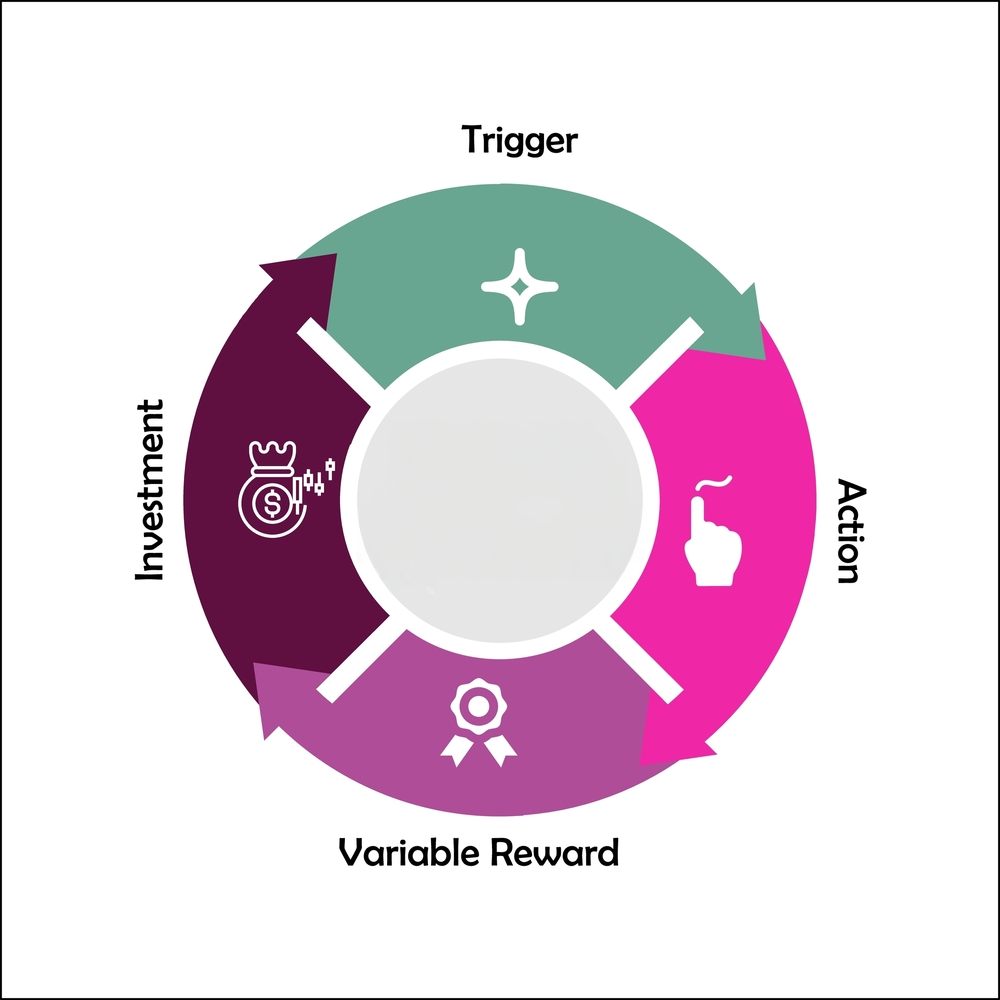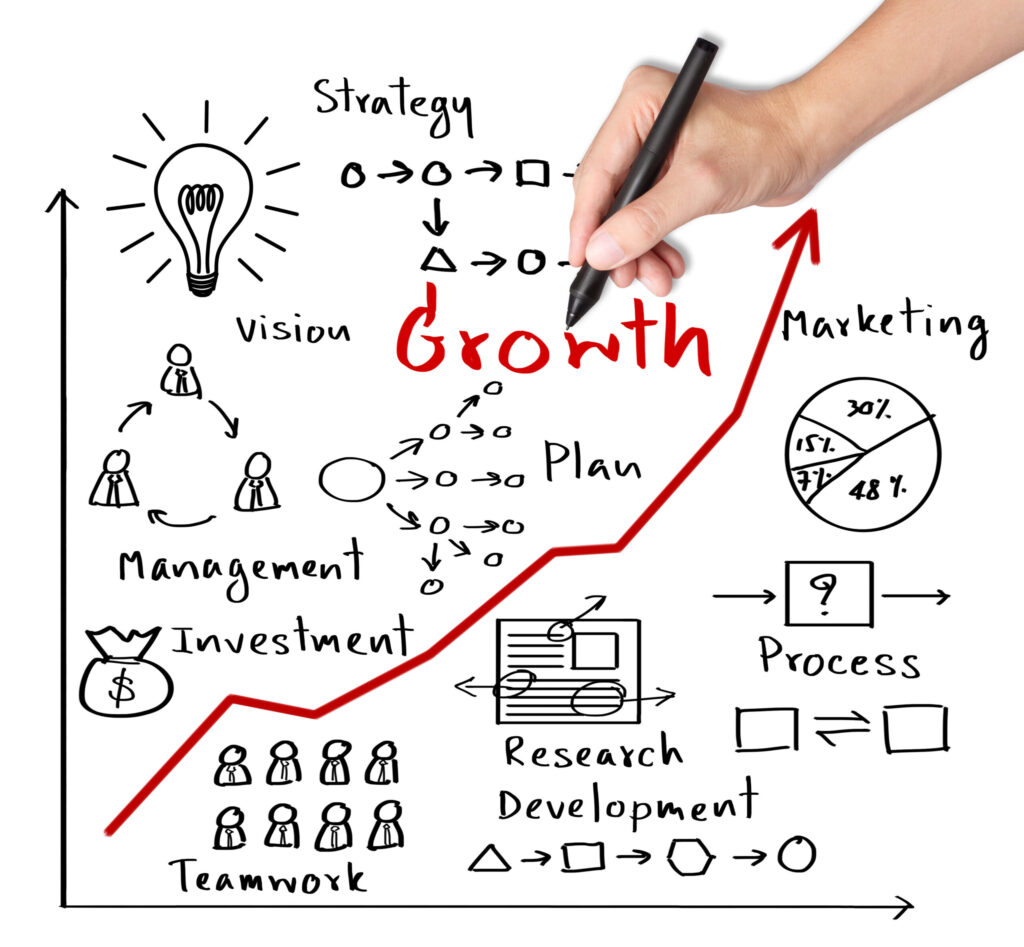The Hooked Model is a powerful framework that can revolutionize your growth marketing strategy. By understanding the underlying principles and implementing them effectively, you can create a highly engaging and addictive user experience that drives long-term success. In this article, we will explore the key components of the Hooked Model and provide practical insights on how to leverage it in your marketing efforts.

Understanding the Hooked Model
At its core, the Hooked Model is designed to create habits and behaviors that keep users coming back for more. It consists of four distinct phases: trigger, action, variable reward, and investment. Each phase plays a crucial role in captivating users and driving sustained engagement.
The Four Phases of the Hooked Model
The first phase of the Hooked Model is the trigger. Triggers prompt users to take action and engage with your product or service. Triggers can be external, such as push notifications or email reminders, or internal, such as emotions or thoughts that prompt a user to seek a solution.
Next is the action phase, where users perform specific behaviors to satisfy their needs or desires. This phase should be effortless and frictionless to encourage users to take action without hesitation.
The variable reward phase is where the magic happens. By providing users with unpredictable and exciting rewards, you tap into their innate curiosity and motivate them to come back for more. Variable rewards can be in the form of discounts, badges, or exclusive content. The key is to create anticipation and excitement around the rewards.
Finally, the investment phase involves getting users to invest time, effort, or even money into your product or service. By encouraging users to invest, they become more committed and less likely to abandon your offering. This phase also creates a sense of ownership, making users more willing to advocate for your brand.
The Psychology Behind the Hooked Model
The Hooked Model is rooted in psychology and taps into human behavior patterns. We are naturally inclined to seek pleasure and avoid pain, and the Hooked Model leverages this innate motivation to keep users engaged. The model creates a sense of anticipation, reward, and investment, which triggers powerful emotions and drives addicted behavior.
Understanding the psychology behind the Hooked Model is essential for designing products and services that truly captivate users. By understanding how triggers, actions, variable rewards, and investments influence human behavior, you can create experiences that are not only engaging but also addictive.
Triggers, for example, can be carefully crafted to align with users’ needs and desires. By identifying the pain points or challenges your target audience faces, you can design triggers that resonate with them on a deep level. Whether it’s a push notification that reminds them of a problem they need to solve or an emotional trigger that taps into their aspirations, the right trigger can be the catalyst for action.
Once users are engaged and taking action, the variable reward phase comes into play. This phase is all about creating a sense of anticipation and excitement. By offering rewards that are unpredictable and valuable, you tap into users’ desire for novelty and discovery. This can be achieved through personalized discounts, exclusive content, or even virtual badges that showcase their achievements.
As users continue to engage with your product or service, implementing a product-led growth (PLG) strategy during the investment phase becomes crucial. By encouraging users to invest their time, effort, or money, you create a sense of commitment and ownership. This can be achieved through features like progress tracking, customization options, or even loyalty programs that reward users for their continued engagement.
By understanding and leveraging the psychology behind the Hooked Model, you can create experiences that not only capture users’ attention but also keep them coming back for more. Remember, the key is to create a seamless flow from trigger to action, provide exciting and unpredictable rewards, and encourage users to invest in your offering. With these principles in mind, you can design products and services that truly hook users and drive sustained engagement.
Implementing the Hooked Model in Your Marketing Strategy

Now that we have delved into the theory behind the Hooked Model, let’s explore how you can implement it effectively in your growth marketing strategy. Two key aspects to consider are identifying your user’s internal triggers and designing effective action phases.
When it comes to implementing the Hooked Model in your marketing strategy, it’s crucial to also focus on the reinforcement stage. This stage involves rewarding users to encourage repeated engagement with your product or service. By providing variable rewards that keep users interested and coming back for more, you can create a habit-forming loop that sustains long-term customer engagement.
Identifying Your User’s Internal Triggers
An internal trigger is a psychological state or emotion that prompts a user to take action. By understanding your target audience and the underlying motivations driving their behavior, you can tailor your marketing messages to trigger their internal needs. This insight is invaluable in creating personalized and impactful marketing campaigns.
Moreover, delving deeper into the realm of internal triggers involves conducting thorough user research and leveraging data analytics to uncover patterns in user behavior. By identifying common pain points or desires among your target audience, you can strategically align your marketing efforts to resonate with their specific needs, fostering a deeper connection and driving conversion rates.
Designing Effective Action Phases
The action phase is where users engage with your product or service. To ensure success, it is essential to design action phases that are effortless and intuitive. Remove any unnecessary barriers and streamline the user experience to make it as seamless as possible. Remember, simplicity and convenience are the keys to driving action.
In addition to designing seamless action phases, it’s imperative to incorporate social proof and testimonials into your marketing strategy. By showcasing positive feedback and real-life success stories from satisfied customers, you can build trust and credibility with potential users, ultimately influencing their decision-making process and driving conversions. Harnessing the power of social validation can significantly enhance the effectiveness of your action phases and contribute to the overall success of your marketing campaigns.
The Role of Variable Rewards in the Hooked Model

Variable rewards play a crucial role in creating addictive user experiences. By incorporating uncertainty and surprise, you tap into the brain’s reward center and trigger a dopamine response. Let’s delve into the power of uncertainty and how to create a reward system that keeps users engaged.
Variable rewards are not only effective in driving user engagement but also in fostering a sense of accomplishment and satisfaction. When users receive a reward that they were not expecting, it enhances their overall experience and leaves them wanting more. This element of surprise can lead to increased user loyalty and advocacy, as users feel a deeper connection to the product or service.
The Power of Uncertainty in Driving User Behavior
Uncertainty is a powerful motivator. When users are unsure about what rewards they will receive, they become more engaged and compelled to keep coming back. This psychological effect is commonly seen in gamification, where users are hooked on unlocking new levels or receiving hidden rewards. By leveraging uncertainty, you can create a sense of excitement and anticipation that keeps users addicted to your offering.
Moreover, uncertainty can also spark creativity and problem-solving skills in users. When faced with unpredictable rewards, users are motivated to think outside the box and explore different strategies to maximize their chances of receiving desirable outcomes. This not only enhances the user experience but also fosters a sense of personal growth and development.
Creating a Reward System That Keeps Users Engaged
When designing your reward system, it is important to strike a balance between predictability and variability. While variable rewards are essential to maintain user engagement, having some predictable elements can also be beneficial. For example, providing users with occasional small rewards alongside the variable rewards can help maintain a sense of progress and encourage continued use. Experimentation and gathering user feedback are crucial in fine-tuning your reward system to maximize engagement.
Furthermore, it is essential to consider the timing of rewards within your system. Introducing delays between actions and rewards can increase anticipation and make the eventual reward more satisfying. This concept, known as the “variable reinforcement schedule,” is a key principle in behavioral psychology and can significantly impact user behavior and engagement levels. By strategically designing the timing of rewards, you can create a more compelling and immersive user experience.
The Importance of Investment in the Hooked Model

Investment is a key driver of user retention and advocacy. By getting users to invest time, effort, or money into your product or service, you create a sense of commitment and attachment. Let’s explore how user investment leads to retention and strategies for encouraging it.
Investment in the Hooked Model goes beyond mere financial transactions; it encompasses a deeper level of engagement and commitment from users. When individuals invest their time, effort, or money into a product or service, they are not just making a transactional exchange, but rather forming a relationship with the brand. This emotional connection can lead to increased loyalty and advocacy, as users feel a sense of ownership and pride in their investment.
How User Investment Leads to Retention
When users invest their time, effort, or money into your product or service, they become more emotionally attached and committed. This sense of ownership and investment increases the likelihood of them continuing to use your offering and recommending it to others. User investment is a powerful tool to drive long-term retention and loyalty.
User investment also plays a crucial role in shaping user habits and behaviors. By encouraging users to invest in your product or service, you are not only fostering loyalty but also creating a habit-forming experience. This habitual usage leads to sustained engagement and increased lifetime value for the user.
Strategies for Encouraging User Investment
There are several strategies you can employ to encourage user investment. One approach is to provide users with customization options or personalization features. By allowing users to tailor their experience to their preferences, you foster a sense of ownership and investment. Additionally, offering exclusive content or rewards to loyal users can further incentivize their continued engagement. Regularly communicate the value they gain from their investment and highlight the benefits of staying involved.
Another effective strategy is to create a sense of community around your product or service. By fostering a community where users can connect, share experiences, and support each other, you deepen their investment in your brand. This sense of belonging can strengthen their emotional attachment and drive long-term retention. Encouraging user-generated content and facilitating interactions among users can further solidify their investment in your offering.
Measuring the Success of the Hooked Model in Your Marketing
As with any marketing strategy, it is crucial to measure the success and impact of the Hooked Model in your growth marketing efforts. By tracking key performance indicators (KPIs) and adjusting your strategy based on the results, you can continuously optimize and improve your marketing campaigns.
One important KPI to consider when measuring the success of the Hooked Model is the user retention rate. This metric indicates how many users continue to engage with your product or service over a specific period of time. A high retention rate suggests that your Hooked Model is effectively capturing and maintaining the interest of your target audience.
Another KPI to keep an eye on is the frequency of usage. This measures how often users interact with your product or service. A high frequency of usage indicates that your Hooked Model is successfully creating habits and encouraging regular engagement. It shows that users are finding value in your offering and are motivated to use it repeatedly.
Key Performance Indicators for the Hooked Model
In addition to user retention rate and frequency of usage, referral metrics are also important indicators of the effectiveness of your Hooked Model. Referral metrics measure the number of users who refer your product or service to others. A high referral rate suggests that your Hooked Model is not only engaging users but also turning them into advocates who actively promote your offering to their network.
Furthermore, tracking user feedback and measuring customer satisfaction can provide valuable insights into the impact of the Hooked Model on your user base. User feedback can help you understand how users perceive your product or service, identify pain points, and uncover areas for improvement. Customer satisfaction surveys can provide quantitative data on how satisfied users are with their overall experience, allowing you to gauge the effectiveness of your Hooked Model in delivering a positive user experience.
Adjusting Your Strategy Based on Hooked Model Results
Regularly analyze the data and feedback collected to identify areas for improvement. Use A/B testing, geofencing, and other methods to experiment with different triggers, rewards, and investment options, and measure the impact on user behavior and engagement. By being agile and adaptive, you can refine your strategy based on real-time insights and enhance the effectiveness of the Hooked Model in your marketing efforts.
It is important to note that the success of the Hooked Model may vary depending on your target audience and industry. Therefore, it is crucial to continuously monitor and analyze the specific metrics that are most relevant to your business goals and objectives.
In conclusion, the Hooked Model is a game-changer in growth marketing. By leveraging the psychological principles behind human behavior, you can create addictive user experiences that foster long-term engagement and drive business growth. Implement the Hooked Model strategically, continuously measure its impact, and adapt your strategy based on the results to maximize the success of your growth marketing efforts.